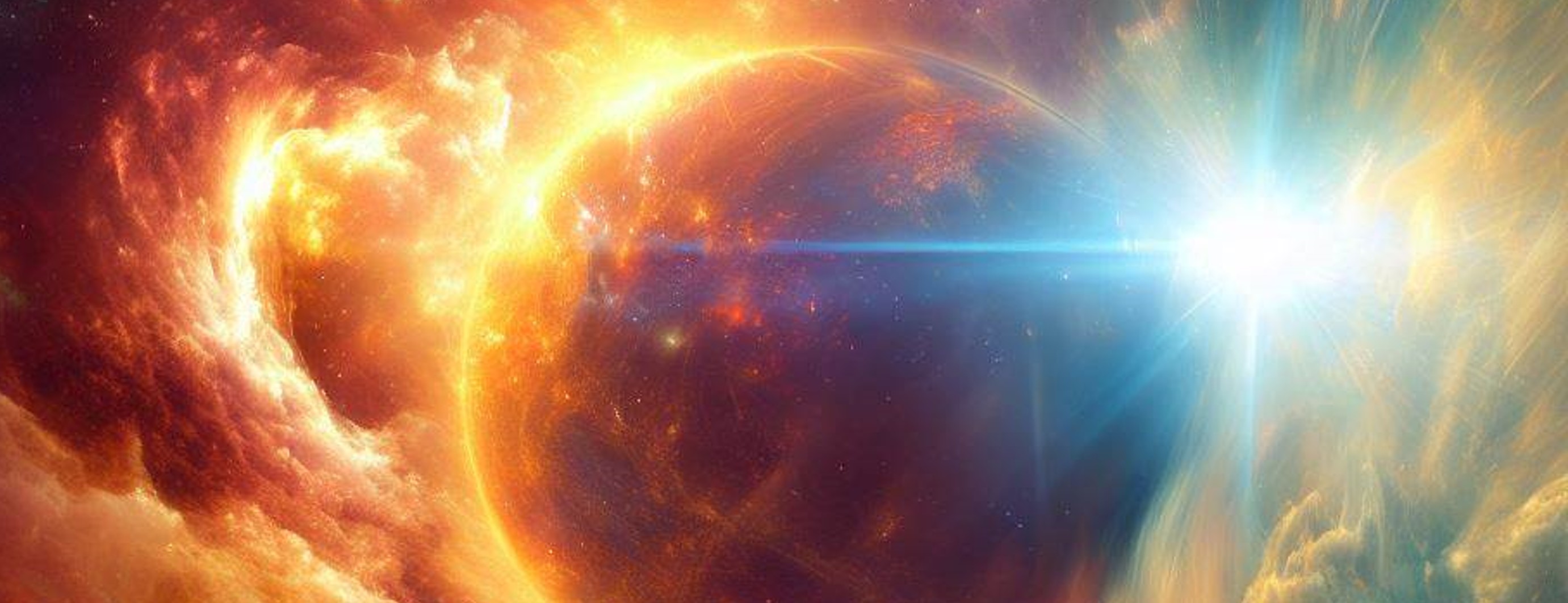
Published 2023-06-05
Keywords
- Bose-Einstein condensate,
- Charged Bose gas,
- Astrophysical Chemistry
How to Cite
Ninham, B. W., Brevik, I., Malyi, O. I., & Boström, M. (2023). A Role for Bose-Einstein Condensation in Astrophysics. Substantia, 7(2), 35–39. https://doi.org/10.36253/Substantia-2091
Copyright (c) 2023 Barry W. Ninham, Iver Brevik, Oleksandr I. Malyi, Mathias Boström

This work is licensed under a Creative Commons Attribution 4.0 International License.
Abstract
We revive a 60-year-old idea that might explain a remarkable new observation of a periodic low-frequency radio emission from a source at galactic distances (GLEAM-X J162759.5-523504.3). It derives from the observation that a high-density high-temperature charged boson plasma is a superconducting superfluid with a Meissner effect.
References
- B. W. Ninham, “Charged Bose gas in astrophysics”, Phys. Lett. 4, 278 (1963).
- C. Gruber and A. Pelster, “A theory of finite-temperature Bose-Einstein condensates in neutron stars”, Eur. Phys. J. D 68, 341 (2014).
- N. Hurley-Walker, X. Zhang, A. Bahramian, S. J. McSweeney, T. N. O’Doherty, P. J. Hancock, J. Morgan, G. E. Anderson, G. H. Heald, and T. J. Galvin, ”A radio transient with unusually slow period emission” Nature 601, 526 (2022).
- M. Kramer, B. W. Stappers, A. Jessner, A. G. Lyne and C. A. Jordan, “Polarized radio emission from a magnetar”, Mon. Not. R. Astron. Soc. 377, 107–119 (2007).
- L. M. Capparelli, A. Damiano, L. Maiani, A. D. Polosa, “A note on polarized light from magnetars”, Eur. Phys. J. C 77, 754 (2017).
- S. Dai, M. E. Lower, M. Bailes, F. Camilo, J. P. Halpern, S. Johnston, M. Kerr, J. Reynolds, J. Sarkissian, and P. Scholz, “Wideband Polarized Radio Emission from the Newly Revived Magnetar XTE J1810–197”, ApJL 874 L14 (2019).
- T. Hashimoto, Y. Ota, A. Tsuzuki, T. Nagashima, A. Fukushima, S. Kasahara, Y. Matsuda, K. Matsuura, Y. Mizukami, T. Shibauchi, S. Shin, K. Okazaki, “Bose-Einstein condensation superconductivity induced by disappearance of the nematic state”, Sci. Adv. 6 : eabb90 (2020).
- M. R. Schafroth, ”Superconductivity of a charged ideal Bose gas”, Phys. Rev. 100, 463 (1955).
- J. M. Blatt, ”Persistent ring currents in an ideal Bose gas”, Prog. Theor. Phys. 26, 761 (1961).
- M.R. Schafroth, S.T. Butler, and J.M. Blatt, “Quasichemical equilibrium approach to superconductivity”, Helv. Phys. Acta 30, 93 (1957) .
- R. Friedberg., T. D. Lee, and H. C. Ren, ”A correction to Schafroth's superconductivity solution of an ideal charged Boson system”, Ann. Phys. 208, 149-215 (1991).
- B. W. Ninham, ”Charged Bose gas”, Nucl. Phys. 53, 685-692 (1964).
- L. L. Foldy, ”Charged Boson gas”, Phys. Rev. 124, 649 (1961).
- J. Bardeen, "Theory of the Meissner Effect in Superconductors", Phys. Rev.97 (6): 1724–1725 (1955).
- L. Cooper, “Bound electron pairs in degenerate Fermi gas”. Phys. Rev. 104 (4): 1189–1190 (1956).
- J. Bardeen, L.N. Cooper, and J.R. Schrieffer, “Theory of Superconductivity”, Phys. Rev. 108, 1175 (1957).
- N. N. Bogoliubov, "On a new method in the theory of superconductivity", Il Nuovo Cimento. 7 (6), 794–805 (1958).
- V. Trimble, “The origin and abundances of the chemical elements revisited”, The Astron. Astrophys. Rev. 3, 1-46 (1991).
- G. Burbridge and F. Hoyle, “The origin of helium and other light elements”, Astrophys. J., 509, L1-L3 (1998).
- F. Hoyle and W. A. Fowler, “Nucleosynthesis in supernovae”, Astrophys. J. 132, 565-590 (1960).
- K. M. Burbridge, G. R. Burbridge, W. A. Fowler, and F. Hoyle, “Synthesis of the elements in stars”, Rev. Mod. Phys. 29, 547-650 (1957).
- P. J. Woods and C. N. Davids, “Nuclei beyond the proton drip-line”, Annual Rev. of Nuclear and Particle Science 47, 541-590 (1997).
- O. K. Manuel, B. W. Ninham and S. E. Friberg, “Superfluidity in the Solar Interior: Implications for Solar Eruptions and Climate”, Journal of Fusion Energy, (2003), 21 (3/4), 193- 198.
- O.K. Manuel ,C. Bolon and P. Jangam, “Nuclear systematics: II. The cradle of the nuclides”, Journal of Radioanalytical and Nuclear Chemistry 251, 417–422 (2002).
- A. Mann, ”The strange hearts of neutron stars”, Nature 579, 20-22 (2020).





